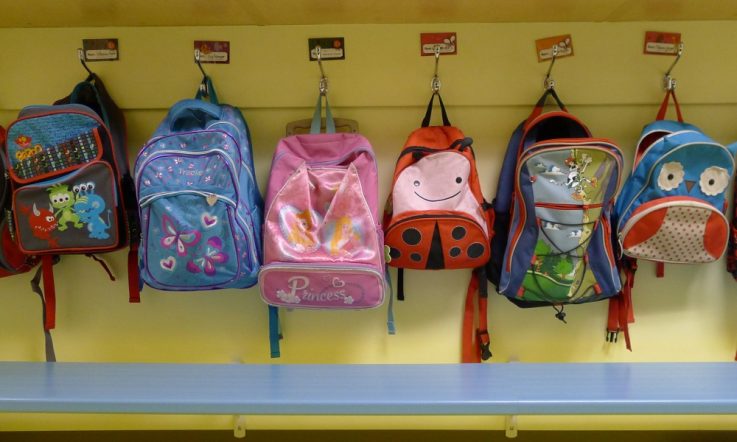In the second of two articles focusing on how teachers are responding to their local Australian Early Development Census (AEDC) data, we find out about the improvements at a Canberra primary school that has a preschool attached.
At Chapman Primary School in the ACT, school leaders and staff are using a range of data to identify and meet the needs of young students.
The AEDC takes place every three years and measures five ‘domains' of early childhood development when children enter primary school: physical health and wellbeing; social competence; emotional maturity; language and cognitive skills; and, communication skills and general knowledge.
In 2012, 15.4 per cent of children in the suburb of Chapman were reported in the census as developmentally vulnerable in the domain of physical health and wellbeing. Chapman Primary School principal Anne Simpson tells Teacher 2018 census data show that figure has now fallen to just 2.9 per cent.
According to the AEDC, being developmentally vulnerable in this particular domain means children may experience challenges that include ‘being dressed inappropriately, frequently late, hungry or tired. Children are usually clumsy and may have fading energy levels'.
Chapman is a suburb in Weston Creek. In 2012, 12.7 per cent of Weston Creek's children were developmentally vulnerable in the physical health and wellbeing domain – in 2018 the figure had dropped to 6.6 per cent. Nationally, over the same period, the figures saw a slight increase from 9.3 per cent to 9.6 per cent.
Two years ago, Simpson spoke to Teacher about programs and processes she introduced in response to the learning needs of the local children, in particular in relation to physical health and wellbeing.
Among other things for kindergarten students (those in the first year of primary school), Chapman Primary set up a specific fundamental motor skills program and, after researching information on forest schools in England, set up a Bush Kids program.
Reflecting on progress since then, Simpson says: 'Bush Kids and fundamental motor skills are now well embedded in our school curriculum with a strong focus on respect, resilience and independence.'
The school introduced a program called Active Play, for which it won a grant. 'It enables the kids to develop gross motor and fine motor skills out in the playground while they are actively playing. We have also purchased equipment for the preschool children.
‘We have upgraded the playground to make it an environment where they have a big space where they can run around and they can do exercise.
‘Since 2015, we have had a whole school approach to health and wellbeing from preschool to Year 6 under the KidsMatter.
‘All staff have engaged in professional learning, our community has been immersed in the journey through workshops, our newsletter and Facebook posts, and children have participated in weekly social emotional learning activities. And, each fortnight children are rewarded for positive contributions to our school through our FRIENDS values.'
The latest AEDC data have not only confirmed strong improvement in the development of the children starting their first year of primary school but also shone a light on a different domain on which to focus – and Chapman Primary School is doing this from preschool and in collaboration with the parent community.
Simpson says the school-based domain results for Chapman show that the measure of vulnerability for Language and Cognitive skills was 8.8 per cent in 2018.
‘Results were shared with preschool and kindergarten staff by the team leader, the executive teacher of preschool and kindergarten, as a component of our data conversations,' she says.
‘Each professional learning team at Chapman is released from face-to-face teaching. This time is dedicated to collaborative conversations about what the data is telling us.'
Simpson says the AEDC is just one piece of the puzzle. ‘We use multiple sources of data and are not limited to AEDC, therefore [the results] were discussed in relation to other data.'
Each kinder teacher administers the PIPS (Performance Indicators in Primary Schools). ‘Therefore their observations and conversations with each child were highly relevant – the data profile came later.
‘This data, our PIPs data and anecdotal and observational data provides teachers with insight into every child's learning capabilities.
‘Oral language skills is a focus for preschool and they have recently run workshops with parents with a focus on the importance of oral language. The school has also purchased reading support materials that focus on decoding and phonemic awareness.'
Visit the Australian Early Child Development Census website to find out more about the domains and 2018 results and trends.
As a school leader, how are you using data to identify the needs of students in your school?
How do you ensure relevant staff are involved in data conversations? How do these conversations inform teaching and learning programs?



